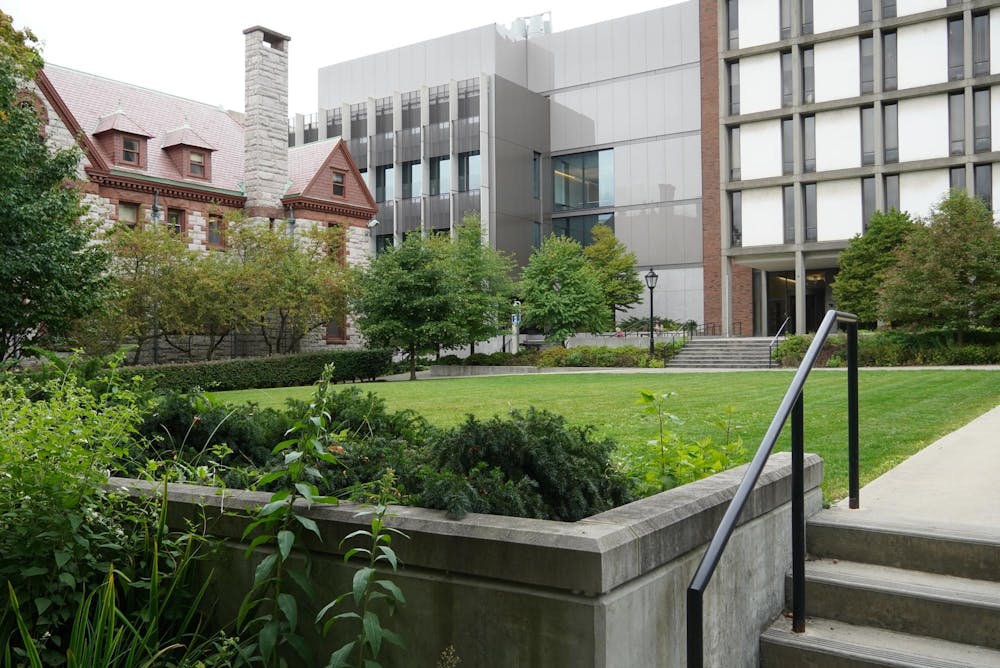A Herald poll found that female students are less likely to study the physical sciences compared to their male counterparts at Brown. 45% of female students study the physical sciences compared to 59% of men — a 14 percentage point gap.
The Herald spoke with experts in education and women who are underrepresented in STEM to understand what drives these trends.
Katherine Rieser, the director of teacher education at Brown, attributed these differences to “structurally racist or gender biased policies” in education, which she says have catalyzed discrepancies between gender and race.
Underrepresented students “are either experiencing stereotypes (or) threats and are less likely to pursue a goal for that reason,” she says.
The motivation to pursue different areas of academic study based on racial or gender identity has been “grandfathered into cultural conditions,” she added.
A lack of and low visibility of female faculty in the physical sciences contributes to these disparities, according to Meredith Hastings, a professor of environment, society and earth. Hastings, an underrepresented faculty member in her field, said that the fewer members of a particular demographic studying a subject, the harder it is for those who are underrepresented.
“If we have a critical mass of women, there’s more tendency for women to be successful,” she added. “Not having a critical mass of women contributes to an environment that can often support exclusionary behaviors,” such as gender harassment, bullying, microaggressions and sexual harassment, Hastings said.
Along with exclusionary behaviors, “students may be experiencing familial pressure to have forms of conventional or cultural success, and are making choices for that reason,” Rieser said. As a result, some may choose to study non-humanities fields.
Once overcoming the barrier of entry into STEM fields, underrepresented identities may not find levels of satisfaction equivalent to that of their peers, Rieser added.
“Even if the person is successful, they can end their time spent in the subject feeling less a sense of job satisfaction or less a sense of inclusion and belonging,” she said. “It can also affect your academic outcomes.”
The differences in the demographics are not coincidental, according to Hastings. She pointed to the “leaky pipeline,” a concept named after a perceived “sequential loss of diverse representation leading to low representation,” according to the National Library of Medicine. The study found that Black, Asian and Hispanic women had the greatest losses in representation in the bachelor to doctorate transition in STEM fields in 2019.
“We see the number of women drop as you go through each career stage,” Hastings said. But calling it a leaky pipeline frames the process as “passive.”
“In reality, a lot of these exclusionary behaviors and harmful behaviors in the workplace contribute to women and other minorities not succeeding,” she added.
Rieser agrees that underrepresentation of minorities in certain academic fields is “structured.” She added that to “combat structured history,” a “structured reality” is needed. That means “finding ways to systematically recruit students from historically underrepresented backgrounds,” and foster inclusive communities for these students, she said.
Brown’s Division of Biology and Medicine alone has ten student groups dedicated to providing an affinity space for members of underrepresented students.
For Patience “Lake” Gifford ’27, the internal communications chair of Brown’s Society of Women Engineers, these organizations offer a network for career advancement, a community to lean on for advice and a chance to be surrounded by like-minded peers.
At Brown, being underrepresented in her field of study “can be tough sometimes,” Gifford said, but “there’s such a good community of women in engineering that you always feel like there is someone you can talk to.”
SWE also reaches out to local Girl Scout troops to get younger girls excited about STEM.
“They think it’s so cool that we’re in college and doing engineering,” Gifford said. “It makes you excited to see what they’re going to end up doing and it’s exciting to get them interested.”
Hastings has noticed improvements in the representation of women over her time as a professional in the geosciences, citing early-start programs as an effective way to boost numbers.
Early encouragement and accessibility in the math and science fields “can really foster excitement” and make STEM a possibility for female college students, she said.
With these student groups and childhood programs, “we definitely have seen the numbers go up across the board,” Hastings said, adding that more work is yet to be done, such as addressing exclusionary behaviors.

Maya Kelly is a metro editor from Providence who covers community, crime and activism as well as business and development. A concentrator in urban studies and data fluency, she is passionate about intersecting storytelling with data analysis. When Maya's not at The Herald, you can find her hanging from an aerial silk, bullet journaling or in the middle of a forest.





